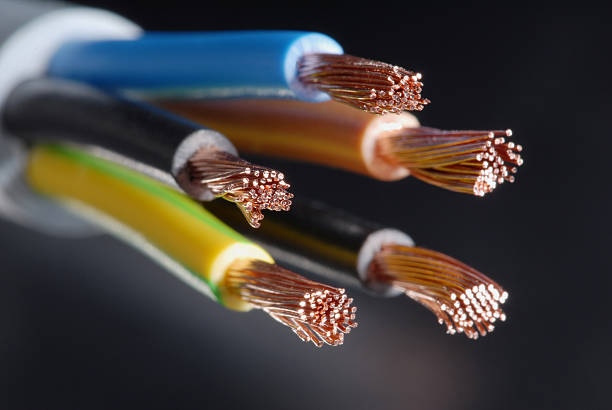Electrical Cables
Electrical Cables: Powering Our World Safely and Efficiently

Electrical cables are essential for transmitting electricity or data in homes, businesses, and industries. We typically use copper or aluminum as conductors, paired with insulation like PVC or XLPE for safety. Choosing the right cable type—whether for power, control, or communication—is vital for reliable operation and avoiding hazards. Regular inspections and awareness of safety certifications help prevent cable failures. If you want to confidently select and maintain the right cables, there’s much more to discover.
Understanding the Basics
Cables consist of:
- Conductors (copper or aluminum) that carry electric current
- Insulation (e.g., PVC, XLPE) that prevents electrical hazards and short circuits
Always check voltage ratings to ensure safe operation for your application.
Common Materials Used
Here are the typical materials found in cable construction:
| Component | Material | Key Features |
|---|---|---|
| Conductor | Copper | High conductivity, low energy loss |
| Conductor | Aluminum | Lightweight, cost-effective |
| Insulation | PVC | Flexible, flame-resistant |
| Insulation | XLPE | Heat-resistant, durable |
Types of Cables & Their Use
Different cables suit different needs:
- Power cables: For transmitting electricity in residential and industrial setups
- Control cables: For automation, providing signal reliability
- Communication cables: Coaxial or fiber optic for data transfer with minimal interference
Key Components of Cables
A cable’s structure includes:
- Conductor: Material affecting performance
- Insulation: Prevents electrical leakage
- Sheath/Jacket: Shields against environmental damage
- Armor (optional): Extra protection for harsh conditions
Safety Standards and Certifications
Always ensure your cables meet recognized safety standards:
- Look for certifications like UL, CE, and IEC
- These signify that cables have passed tests for fire resistance, insulation integrity, and performance
Cable Selection Factors
Consider:
- Voltage & current ratings for electrical demands
- Insulation type based on environment (e.g., moisture, chemicals)
- Mechanical strength for durability
- Installation location (indoor, outdoor, underground, hazardous)
Handling and Installation Tips
To ensure long-term safety and performance:
- Avoid excessive bending
- Use cable trays or conduits
- Keep data and power cables separate
- Label cable ends for easier troubleshooting
Maintenance & Signs of Wear
Extend cable life with regular care:
- Inspect cables periodically
- Look for discoloration, cracks, exposed wires
- Check terminals for heat damage or looseness
- Replace damaged cables promptly
Frequently Asked Questions
Can Electrical Cables Be Recycled or Reused?
Yes! Copper and aluminum can be recycled. Reuse is possible depending on condition and safety.
How Do I Safely Dispose of Damaged Cables?
Unplug them, then take to a recycling center. Avoid tossing them in regular trash.
Are There Eco-Friendly Alternatives?
Definitely. Sustainable and biodegradable materials are on the rise in cable tech!
What's the Typical Lifespan of a Cable?
Usually 20–40 years with good maintenance, but harsh conditions may shorten this.
Do Cables Cause Electromagnetic Interference?
Yes, but using shielded cables helps minimize this and ensures data integrity.
Final Thoughts
Electrical cables may hide behind walls and under floors, but they're essential for powering our lives. Choosing the right cable, installing it properly, and maintaining it well ensures a future that’s not just wired—but wired wisely. Stay safe, stay smart, and stay connected.




